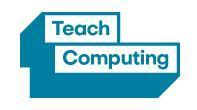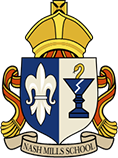Computing
Computing at Nash Mills
Led by Mrs Ofosu

Intent
What is the aim of the computing curriculum at Nash Mills?
- We will give our pupils the life-skills that will enable them to embrace and utilise new technology in a socially responsible and safe way in order to flourish in an ever changing digital world.
- Our pupils will be able to operate in the 21st century workplace and we want them to know the career opportunities that will be open to them if they study computing.
- Pupils will know the risks and dangers of using technology and will have a sound knowledge of how they can work to keep themselves safe when online.
- Pupils will become autonomous, independent users of computing technologies, gaining confidence and enjoyment from their activities.
- We want the use of technology to support learning across the entire curriculum and to ensure that our curriculum is accessible to every child.
- Not only do we want them to be digitally literate and competent end-users of technology but through our computer science lessons we want them to develop creativity, resilience and problem-solving and critical thinking skills.
- We want our pupils to have a breadth of experience to develop their understanding of themselves as individuals within their community but also as members of a wider global community and as responsible digital citizens.
How is the curriculum planned and organised?
Each year group will learn computing related to six specific areas of learning, which will be revisited and progressed throughout the school. The document showing this progression can be found at the bottom of this page. The areas of learning are:
- Using and applying computer skills
- Computer art including 3D modelling
- Programming toys and using a programming language
- Presentation skills including word processing, desktop publishing and spreadsheets
- Using the internet for research, online safety and designing webpages
- Video and audio recording including animation
Implemetation
How is the curriculum taught?
At Nash Mills CofE Primary School, Computing is taught in discreet computing lessons. The Computing curriculum is delivered using the Teach Computing scheme of work. Every lesson in our scheme has been individually planned so that it can be effectively taught using the infrastructure we have in place at school and so that it can meet the needs of all our pupils. Our scheme has been closely referenced against the 2014 National Curriculum attainment targets in order to ensure progression and coverage.
Having discreet lessons means that the children are able to develop depth in their knowledge and skills over the duration of each of their computing topics. Where appropriate, meaningful links are made between the computing curriculum and the wider curriculum. In computing lessons the children use either iPads, Chromebooks or laptops to access the most appropriate apps and software for the learning being conducted.
Other lessons may not need any equipment where discreet computing lessons focus on the curriculum skills of information technology, digital literacy and computer science. Children are given feedback and ways to improve their work verbally and their progress is monitored through achievement within lessons.
A key focus within our curriculum is how we teach children about how they can stay safe online. We start each computing topic with a specific focus around online safety in every class and run a number of other opportunities as pupils move through the school. To find out more about this, please click this link to see our Online Safety page.
Sequencing of Content Our curriculum is based on the Teach Computing scheme of work and includes
The skills are taught concurrently across the school and are built on as children progress up through the school. |
Inclusion We strive to include all children when teaching computing. To ensure this, we provide appropriate equipment such as large keyboards, magnified screens and adapted mice. Lesson resources may be differentiated with scaffolding, additional support of adults or peers or unplugged lessons that don't require keyboard use. |
How we add richness through discussion and cultural capital We aim to give our pupils the life-skills that will enable them to embrace and utilise new technology in a socially responsible and safe way in order to flourish in an ever changing digital world. We want our pupils to be able to operate in the 21st century workplace and we want them to know the career opportunities that will be open to them if they study computing. |
How this subject supports our Christian vision Respect for others through e-safety underpins our curriculum. Children are encouraged to be kind, patient and supportive of each other as they share equipment and contribute to joint projects. |




